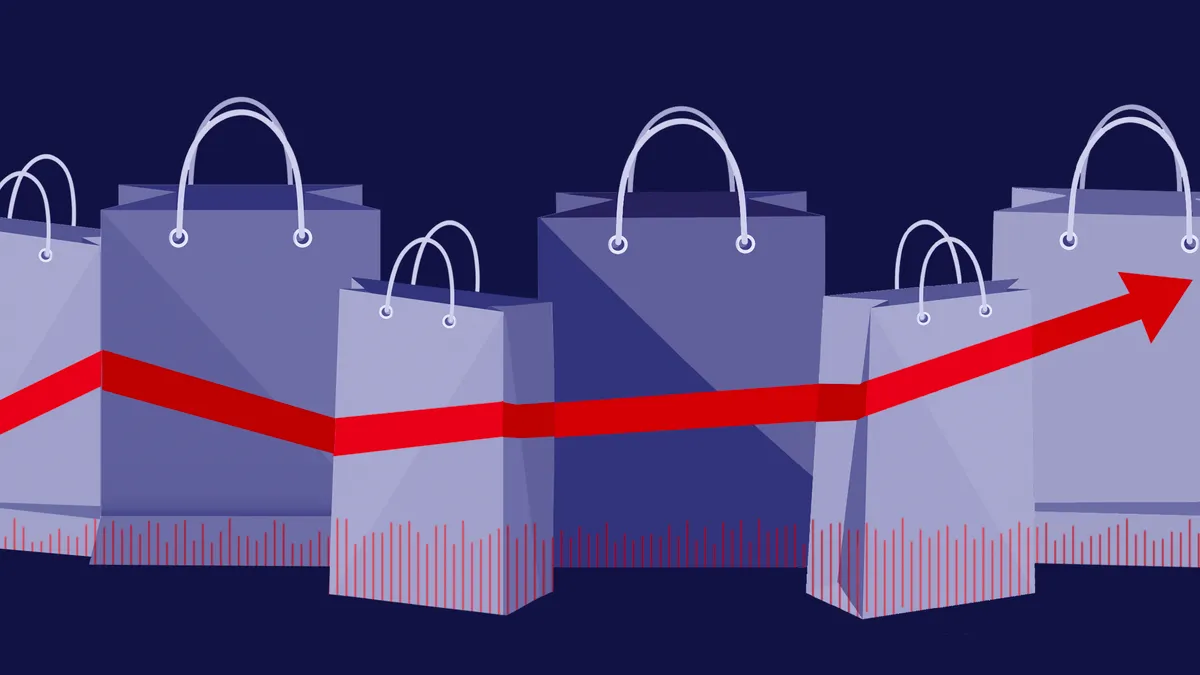Dive Brief:
-
The U.S. Census Bureau announced Wednesday that U.S. retail and food services sales fell 0.3% in March to $446.9 billion. That missed a median forecast of a 0.1% gain from 81 economists surveyed by Bloomberg.
-
Excluding auto sales, March retail purchases increased 0.2% and were flat in February. Total sales for January through March this year were up 2.8% year-over-year. The percent change for January to February this year was also revised up—from a decrease of 0.1% to flat.
-
Retail trade sales were down 0.2% from last month, and up 1.3% year-over-year. March clothing and accessories sales fell 0.9%, general merchandise sales rose 0.5%, and electronics and appliance sales rose 0.1%. E-commerce sales fell 0.1%.
Dive Insight:
The Commerce Department’s March snapshot continues the story of the conservative American spender. Although employment has been steady or improving for months and wage gains are happening, middle and lower incomes still must rise for Americans to widen their wallets.
“I don’t think the consumer will spend beyond his or her means,” Gregory Daco, head of U.S. macroeconomics at Oxford Economics Ltd. in New York, told Bloomberg. “A sustained acceleration in wages is still the missing piece.”
Consumers are also choosing to save or pay off debt rather than spend, and when they do, they are increasingly favoring experiences over stuff. These new spending trends are forcing retailers to reconsider their marketing strategies and physical stores, offering more value to the consumer with no-cost online resources and free in-store events.
“The old notion of ‘build it and they will come,’ and the store is in the center and the consumer wants the store, has been flipped on its head. It’s the consumer at the center. The store has to go to the consumer, wherever they are," Robin Lewis, CEO of The Robin Report, told Retail Dive in January.
On Wednesday, the U.S. Department of Labor also released its Producer Price Index for March that showed a 1% drop in wholesale prices, a sign that inflation is muted and could lead the Federal Reserve to continue its plans for small interest rate increases.













